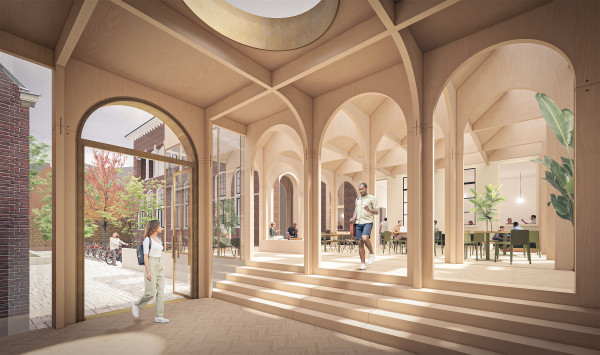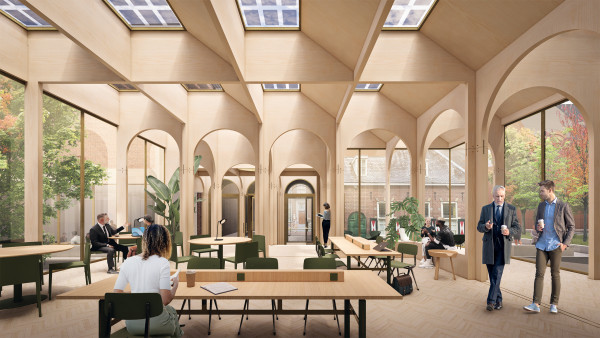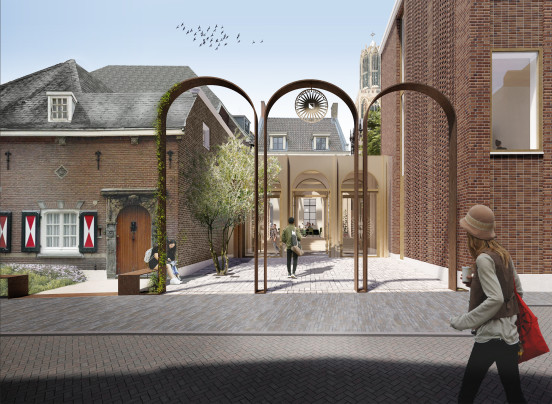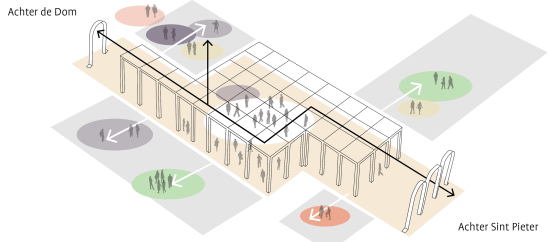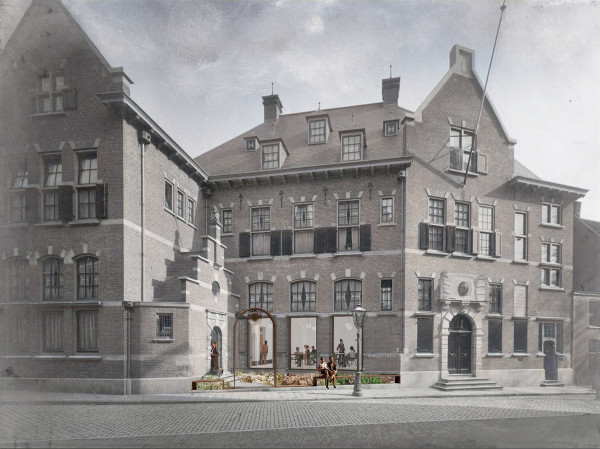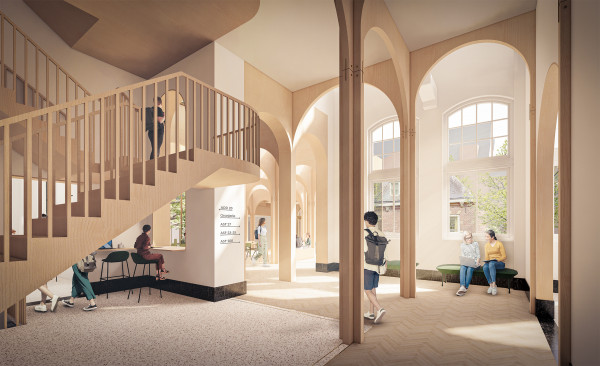Wooden arch structure forms a new layer of time that connects
Utrecht University is creating an Inner-city Education Centre by combining four buildings at the foot of Utrecht’s Dom cathedral, the Anna Maria van Schurman building. Three buildings of national historical importance, all from different periods, are to be renovated and redeveloped, and the 1950s building will be replaced with a new construction. A connecting atrium with a wooden arch structure is to be realised where the four buildings meet, forming a new layer of time that connects both figuratively and literally.
Central education centre in Transcluster
Utrecht University’s identity is intertwined with the history of the city centre, where different time-layers have shaped the pattern of buildings and streets. The buildings around the Dom form the university’s ‘Transcluster’. This grouping lacked a generic educational building that could connect and facilitate the various faculties: one central building with space for meeting and collaboration, as well as for projects, group-work, self-study areas, and a lecture hall.
Four buildings from different time-layers
Such a place was found by clustering together four buildings on the streets of Achter Sint Pieter and Achter de Dom: a double-width transverse house whose structure dates back to 1650; a former bank building from 1911 with a splendid stepped gable; a detached caretaker’s house from 1912; and the more modern university building from 1958 that will make way for a new construction. By connecting these buildings, the university aims to create the inviting education centre it needs. The result will be a complex with a clear structure that is explicitly connected to the streetscape, and forms part of the city centre, naturally integrating with the scale and character of the existing buildings.
Gate as a symbol of connection
DP6’s design includes a connecting wooden arch structure between the four buildings, functioning as a light and transparent ‘atrium’ or ‘orangery’, in order that the ‘openness’ between the buildings remains readable. Inspired by the city’s rich history, the arch symbolises this much-needed connection: connection between students, teachers, researchers and guests; between education and research in the Transcluster; and between the university and the city. The arch structure also literally connects the four buildings, and creates a linking passage from Achter Sint Pieter to Achter de Dom.
The arch structure respects the existing buildings and ensures that they remain individually readable, without itself disappearing. It also functions as a backbone for the Education Centre and creates a new time-layer, as a symbol of connection. Made of wood, it is visibly demountable by means of the ornamental joints, and thus also reversible.
The new main entrance will be clearly visible and positioned on the Achter Sint Pieter side by adding a tripartite open gateway, in the place where a wall with an actual gate used to stand. On the Cathedral side, the secondary entrance in the stepped gable is also emphasised by a single garden gate. The design of the replacement for the 1950s building refers to the original buildings in the street, both in terms of material and articulation. It will have a classic structure of plinth-centre-crown, arched windows, bay windows and special brickwork patterns. It will have a high degree of internal flexibility in order that the building can be used in a variety of ways in the future. The existing buildings will be renovated in a manner based on the existing spatial and heritage qualities.
Images: preliminary design
-
Program
Renovation and extension of university buildings to educational centre
-
Date
2023 - 2027 -
Surface (GFA)
3.510 m² -
Client
Universiteit Utrecht -
Consultants
Pieters Bouwtechniek, Amsterdam
Galjema, Zoetermeer
LBP|SIGHT, Nieuwegein
HI-plus Bouwadvies, Rotterdam
Bureau Vlaardingerbroek, Utrecht -
Address
Achter Sint Pieter/Achter de Dom, Utrecht
